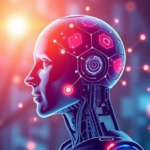Introduction to Transformers
Transformers have revolutionized the field of natural language processing (NLP) and have become the backbone of many state-of-the-art models such as BERT, GPT, and T5. The Transformer architecture was introduced in the 2017 paper titled “Attention Is All You Need” by Vaswani et al. It introduced a novel way of handling sequences through a mechanism called self-attention, which allows the model to weigh the importance of different words in a sentence when making predictions.
In this article, we’ll dive deep into what makes Transformers so powerful, how they work, and why they have become the go-to architecture for a variety of NLP tasks. We’ll also explore some practical examples and provide some fun facts along the way.
1. What is a Transformer?
A Transformer is a type of deep learning model designed primarily for handling sequential data, such as text. Unlike previous models that rely on recurrent neural networks (RNNs) or convolutional neural networks (CNNs) to process sequences, Transformers rely entirely on a mechanism called “attention” to draw global dependencies between input and output.
1.1. The Need for Transformers
Before Transformers, RNNs (including LSTMs and GRUs) were the standard for processing sequences. However, RNNs process data sequentially, which makes it difficult to parallelize training and can result in vanishing gradients for long sequences. CNNs can be parallelized but often require many layers to capture long-range dependencies.
Transformers solve these issues by using self-attention mechanisms that allow the model to consider the entire sequence simultaneously. This makes Transformers highly parallelizable and capable of capturing long-range dependencies more efficiently.
1.2. The Self-Attention Mechanism
The self-attention mechanism is the heart of the Transformer model. It allows the model to focus on different parts of the input sequence when producing an output sequence. Here’s a simple way to understand self-attention: given a sentence like “The animal didn’t cross the street because it was too tired,” self-attention helps the model understand that the word “it” refers to “the animal” and not to “the street.”
2. The Architecture of Transformers
The Transformer model consists of an encoder and a decoder. However, some models, such as BERT, only use the encoder part, while GPT uses only the decoder part. The original Transformer model as described in the “Attention Is All You Need” paper includes both components.
2.1. Encoder
The encoder consists of a stack of identical layers (typically six layers in the original paper). Each layer has two main sub-layers:
- A multi-head self-attention mechanism
- A position-wise fully connected feed-forward network
There is a residual connection around each sub-layer followed by layer normalization. The output of each sub-layer is LayerNorm(x + Sublayer(x)) where Sublayer(x) is the function implemented by the sub-layer itself.
2.2. Decoder
The decoder also consists of a stack of identical layers. However, each layer has three main sub-layers instead of two:
- A masked multi-head self-attention mechanism (which prevents positions from attending to subsequent positions)
- A multi-head attention mechanism that performs attention over the output of the encoder stack
- A position-wise fully connected feed-forward network
Similar to the encoder, there is a residual connection around each sub-layer followed by layer normalization.
3. Self-Attention in Detail
Self-attention allows the model to look at other words in the input sequence to better understand the context of each word. To compute self-attention, we need three vectors for each word in the input sequence: Query (Q), Key (K), and Value (V). These vectors are obtained by multiplying the input embeddings with three different weight matrices that are learned during training.
3.1. Attention Score
The attention score is calculated as follows:
Attention(Q, K, V) = softmax(QK^T / sqrt(d_k))V
where d_k is the dimension of the key vectors. The softmax function ensures that the attention weights sum to one.
3.2. Multi-Head Attention
Instead of performing a single attention function, the Transformer uses multi-head attention where multiple attention functions are performed in parallel. The outputs are then concatenated and once again linearly transformed:
MultiHead(Q, K, V) = Concat(head_1, head_2, ..., head_h)W^O
Where head_i = Attention(QW_i^Q, KW_i^K, VW_i^V)
Here, W_i^Q, W_i^K, W_i^V are the weight matrices for the i-th head and W^O is another weight matrix applied to the concatenated outputs of the attention heads.
4. Positional Encoding
Since Transformers do not have any recurrence or convolution operations, they need a way to capture the order of words in a sentence. This is done by adding positional encodings to the input embeddings. The positional encodings are defined by sine and cosine functions of different frequencies:
PE_{(pos, 2i)} = sin(pos / 10000^{2i/d_model})
PE_{(pos, 2i+1)} = cos(pos / 10000^{2i/d_model})
where pos is the position and i ranges from 0 to d_model / 2. The idea is that the model can learn to attend to these positional encodings and make use of the positional information.
5. The Transformer in Action
To make it a bit more tangible, let’s go through a high-level step-by-step process of how a Transformer processes a sentence:
- Input Embeddings: The input sentence is tokenized and converted into word embeddings.
- Positional Encoding: Positional encodings are added to the word embeddings to capture the order of words.
- Encoder Stack: The combined embeddings are fed through multiple encoder layers where self-attention and feed-forward networks process the data.
- Decoder Stack (if applicable): The encoder’s output is fed into the decoder layers where masked self-attention (ensuring that the model can only look at previous words) and attention over the encoder’s output are used to generate the output sequence one word at a time.
- Output Layer: The decoder’s output is passed through a linear layer followed by a softmax function to produce probabilities for each word in the vocabulary.
6. Practical Applications of Transformers
Transformers have been used in a variety of NLP tasks such as machine translation, text summarization, question answering, and even in fields like protein structure prediction. Here are a few well-known Transformer-based models:
| Model | Type | Description |
|---|---|---|
| BERT (Bidirectional Encoder Representations from Transformers) | Encoder-only | Pre-trained on a large corpus of text and fine-tuned for specific tasks such as question answering, sentiment analysis, and named entity recognition. |
| GPT (Generative Pre-trained Transformer) | Decoder-only | Pre-trained on a large corpus of text and used for text generation tasks such as writing articles, generating dialogue, and completing sentences. |
| T5 (Text-to-Text Transfer Transformer) | Encoder-Decoder | Treats every NLP task as a text-to-text problem where the input and output are always text strings, making it highly versatile. |
7. Fun Facts about Transformers
- Name Origin: The name “Transformer” was inspired by the “transformers” science fiction franchise because the model “transforms” one sequence into another.
- Speed and Parallelization: Unlike RNNs, which need to process words one by one, Transformers can process an entire sentence simultaneously, which makes training much faster on GPU hardware.
- Versatility: Transformers are not limited to NLP tasks. They are now being used in computer vision, such as in the Vision Transformer (ViT) model, which applies self-attention directly to image patches.
8. Conclusion
Transformers have significantly advanced the field of natural language processing and beyond. Their unique architecture allows for parallel computation and the effective handling of long-range dependencies in sequences. By leveraging the self-attention mechanism, Transformers have become the foundation of many cutting-edge models that power applications from language translation to question answering and beyond. Whether you are a researcher, a developer, or an AI enthusiast, understanding Transformers is essential for keeping up with the latest advancements in machine learning and AI.
As you dive deeper into the world of Transformers, you’ll find that they open up a new realm of possibilities for solving complex problems across various domains. So next time you use a smart assistant or a language translation service, remember that there’s a good chance a Transformer model is making it all happen!



